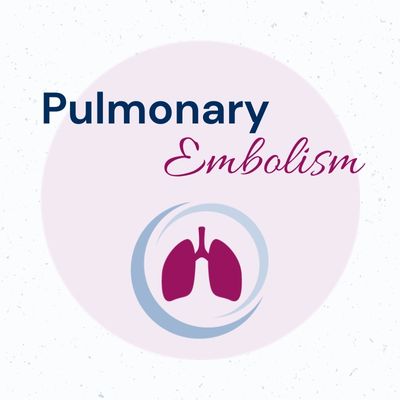According to The Mayo Clinic, a pulmonary embolism, PE for short, is a blockage of the pulmonary arteries within your lungs. Typically, it is caused by a blood clot that begins in your legs and travels to your lungs. A pulmonary embolism can quickly become life-threatening with this blood clot preventing the blood flow into your lungs. Luckily, if you notice the signs and seek medical attention as soon as possible, you will greatly reduce your risk of death.
Symptoms
The most common symptoms of a pulmonary embolism are:
- Shortness of breath that usually appears without any warning and gets worse with exertion.
- Chest pain that gets worse when you bend over, take deep breaths or cough
- Coughing that can produce bloody mucus.
Some other symptoms that you should keep an eye out for include:
- Leg pain or swelling, usually in your calf.
- Clammy or discolored skin.
- Fever.
- Excessive sweating.
- Rapid heartbeats.
- Dizziness.
As with everything, the signs and symptoms of a PE can vary greatly between people. The symptoms experienced depend on several factors:
- How much of the lungs are affected
- Size of the blood clots
- Whether or not you have an underlying heart or lung condition
Causes
Although a blood clot usually causes a blockage in your lungs, it can be caused by other things, such as:
- Fat from the marrow of a broken bone (usually a “long bone” within your body, i.e., your femur or thigh bone),
- Collagen or other tissue
- Part of a tumor
- Air bubbles
Anyone can develop a pulmonary embolism, but certain factors can increase your risk, such as:
- Surgery is the leading cause, but medications that prevent clots are given before and after the surgery.
- A family history of blood clots or pulmonary embolisms.
- Heart disease, specifically heart failure.
- Certain types of cancers, specifically pancreatic, ovarian, and lung.
- Prolonged bed rest.
- Long trips.
- Smoking.
- Being overweight.
- Pregnancy.
Treatment
Don’t be afraid, though. With today’s medical technologies, there are ways to prevent and treat a pulmonary embolism. With the advice of and the careful monitoring by your doctor, you can use blood thinners, compression stockings, leg elevation and physical activity to help protect yourself.
Although a pulmonary embolism can sometimes be hard to diagnose, especially if you have an existing heart or lung condition, there are tests that your doctor can order to help locate and diagnose one. There are blood tests, chest x-rays, ultrasounds, CT scans, pulmonary angiograms, or MRIs.
If these tests uncover a pulmonary embolism, there are two different pathways your doctor can take in order to treat it by using prescription medications or surgery. With the prescription route, your doctor can order oral medications such as blood thinners. In some cases, an injectable medication can be used that dissolves the clot quickly. If you and your doctor decide that medications are not the right path for you, there is also the surgery route, which may include surgery to remove the clot or place a filter in your vein.
Before you try anything new regarding your preventative health and if you’ve been experiencing any of these above symptoms, always, always, always consult your doctor and get their professional medical advice. If you have any concerns at all, schedule an appointment or call our office at (804) 320-4243.

